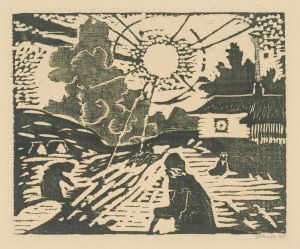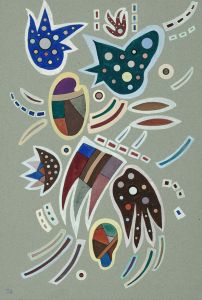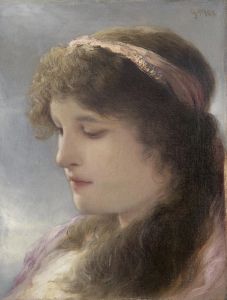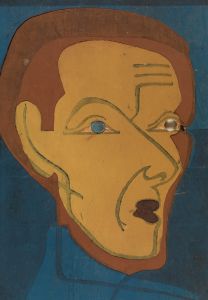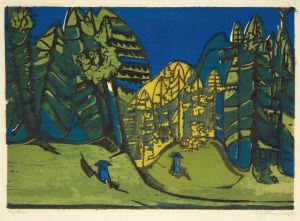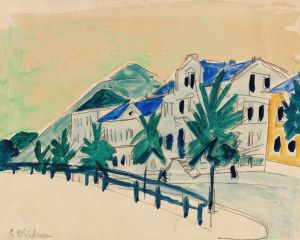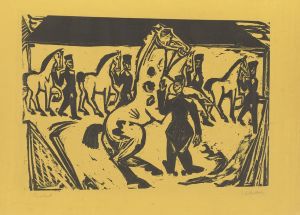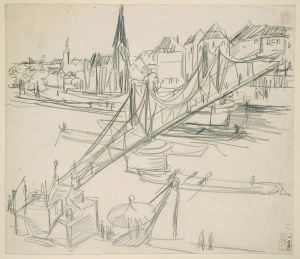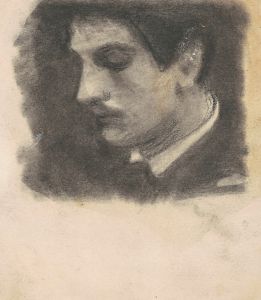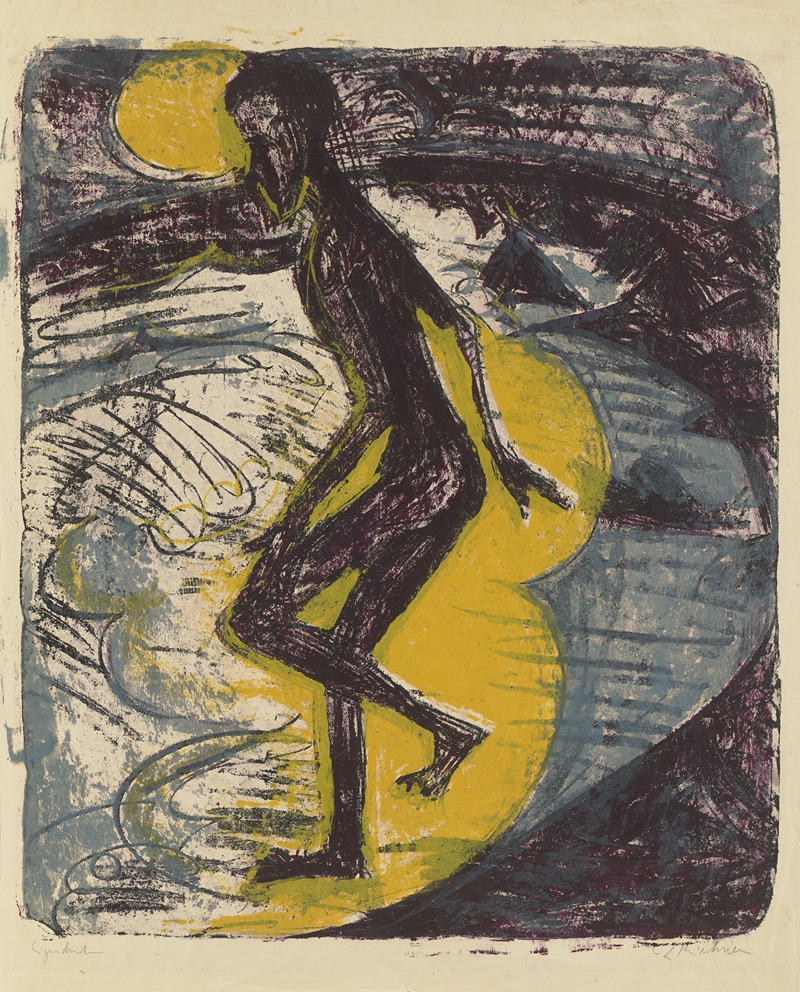
Ins Meer Schreitender
A hand-painted replica of Ernst Ludwig Kirchner’s masterpiece Ins Meer Schreitender, meticulously crafted by professional artists to capture the true essence of the original. Each piece is created with museum-quality canvas and rare mineral pigments, carefully painted by experienced artists with delicate brushstrokes and rich, layered colors to perfectly recreate the texture of the original artwork. Unlike machine-printed reproductions, this hand-painted version brings the painting to life, infused with the artist’s emotions and skill in every stroke. Whether for personal collection or home decoration, it instantly elevates the artistic atmosphere of any space.
Ernst Ludwig Kirchner, a prominent German expressionist painter and one of the founding members of the influential art group Die Brücke, created a significant body of work that explored themes of modernity, human emotion, and the natural world. One of his notable works is "Ins Meer Schreitender," which translates to "Into the Sea Striding." This painting exemplifies Kirchner's distinctive style, characterized by bold colors, dynamic compositions, and expressive forms.
Kirchner was born in 1880 in Aschaffenburg, Germany, and studied architecture in Dresden before fully committing to painting. In 1905, he co-founded Die Brücke with fellow artists Fritz Bleyl, Erich Heckel, and Karl Schmidt-Rottluff. The group sought to bridge traditional art with modern expression, emphasizing raw emotion and a return to more primitive artistic forms. Kirchner's work often reflected the group's ethos, focusing on the human figure and its relationship with the surrounding environment.
"Ins Meer Schreitender" is a testament to Kirchner's fascination with the human form and its interaction with nature. The painting likely depicts a figure striding into the sea, a motif that Kirchner explored in various works. This theme can be interpreted as a metaphor for the human journey, a transition from one state to another, or a connection between humanity and the natural world. Kirchner's use of vibrant colors and dynamic brushstrokes in this painting creates a sense of movement and emotional intensity, hallmarks of his expressionist style.
Throughout his career, Kirchner was deeply influenced by the landscapes and people around him. After moving to Berlin in 1911, he became captivated by the bustling urban life, which he depicted in many of his works. However, his time in Berlin was also marked by personal struggles and the outbreak of World War I, which had a profound impact on his mental health and artistic output. In 1917, Kirchner moved to Davos, Switzerland, seeking solace and recovery. The Swiss landscape became a significant source of inspiration for his later works, including "Ins Meer Schreitender."
Kirchner's art was not only a reflection of his personal experiences but also a response to the broader socio-political context of his time. The expressionist movement, with its emphasis on individual perspective and emotional depth, emerged as a reaction against the industrialization and mechanization of society. Kirchner's works, including "Ins Meer Schreitender," capture this tension between modernity and nature, civilization and the primal.
Tragically, Kirchner's life was cut short in 1938 when he died by suicide. Despite his struggles, his legacy endures through his contributions to modern art and his influence on subsequent generations of artists. His work, including "Ins Meer Schreitender," continues to be celebrated for its emotional power and innovative approach to form and color.
Today, Kirchner's paintings are held in high regard and can be found in major art museums and collections worldwide. "Ins Meer Schreitender," like many of his works, offers viewers a glimpse into the mind of an artist who sought to capture the complexities of human experience through the lens of expressionism.





